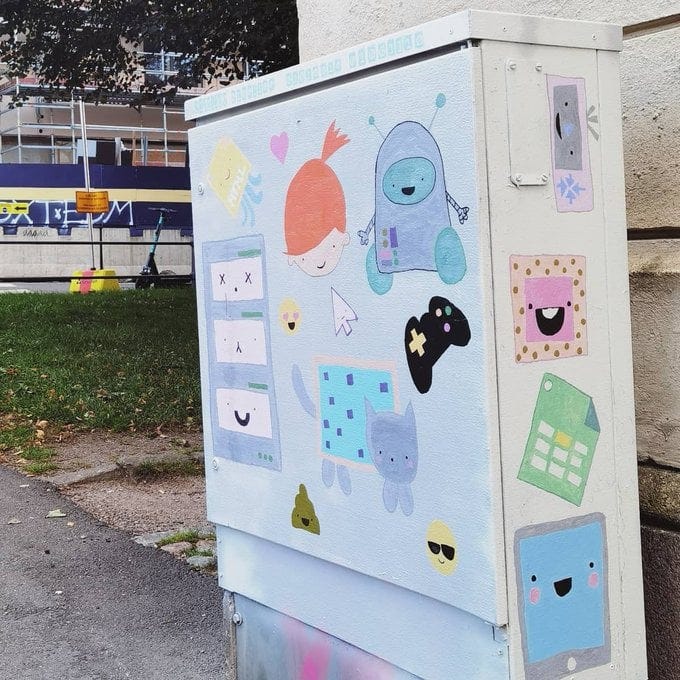No. 04 — Scavenger Hunts 🗺️ Packet Sniffing 📦 A walk of a different kind
Look up, look down.
My name is Linda. I write a bi-weekly newsletter about computer science, childhood and culture - and there are 9818 of you listening. If you enjoy this issue, please share it with anyone you think may find it useful.

For the last two weeks I’ve been painting an electricity box in downtown Helsinki📍
This box belongs to Helsingin Energia and is a part of their artbox project. Walking around the city I’ve always paid a lot of attention to the mysterious containers, manholes and cabling but I know for many people this infrastructure is invisible.
The plan is to eventually make a tiny accompanying website to explain what happens inside this electricity box that allows us to play games, watch videos and chat with loved ones on the opposite side of the world. So in this weeks edition: hiding in plain sight!
I first ran into Ingrid Burrington’s work when I was living in New York. Networks of New York is a slender, delightful breakdown of everything that happens in a city to make up what we today think of as the Internet.
It’s written almost like a scavenger hunt: following the changing names of big telecom companies stamped on manhole covers and scrawled with spray paint, looking up in a park to discover the cell towers, traffic sensors and other probes that give us free wi-fi (and/or surveillance). I knew immediately I wanted to turn her work into an activity that would also help children understand their surroundings.

Take a walk around your neighbourhood and really look - up and down - to find the almost invisible infrastructure of Internet and modern technology.
Mark down everything you find and make a map. It doesn’t matter if you don’t know the purpose of every box - odds are the answers are anyways scattered across the city, network operators and consortium of infrastructure companies. Asking questions and paying attention is the goal here. Scavenger hunts are thrilling for children - they help see the world through a different lens and make discoveries, help notice details in the world around them and build vocabulary.
Linked List
In computer science, a linked list is a linear collection of data elements whose order is not given by their physical placement in memory. But here it is a selection of things I’ve been reading lately.
A warm recommendation for Ingrid’s work. I especially love her maps.
Jen Kagan’s old piece on Packet Sniffing in the Subway and Shannon Mattern’s writing on how a city is not a computer remain relevant as ever.
Childhood agency over one’s environment is a topic near and dear to my heart. Michael Chabon wrote a beautiful essay called Manhood for Amateurs: The Wilderness of Childhood and Robert Macfarlane’s work on vocabulary, nature and exploration are pieces I keep returning to year over year.
The classroom
I’m hoping to surface and share stories from all of you and I’d love to see your creations! Or hit reply and answer me:
What was your themed Internet infrastructure walk like? Did you make a map? Send me a picture of the manhole covers in your city and what surprises you discovered.

